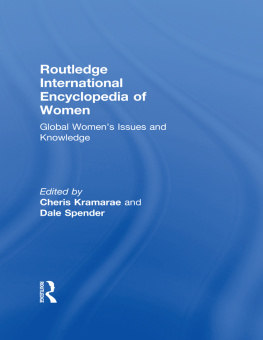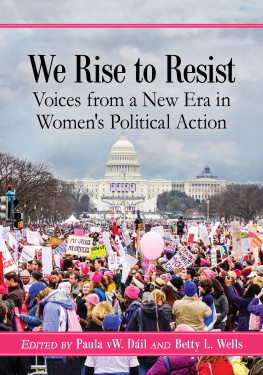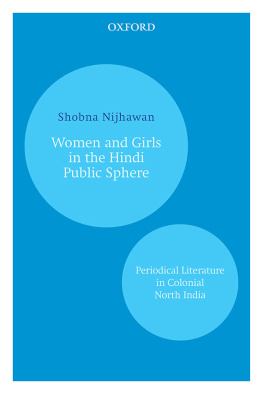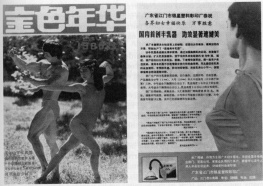First published 1990
by Routledge
2 Park Square, Milton Park, Abingdon, Oxon, OX14 4RN
Simultaneously published in the USA and Canada
by Routledge
270 Madison Ave, New York NY 1006
This edition first published 2001
First issued in paperback 2010
Routledge is an imprint of the Taylor & Francis Group
Editorial material and selection 1990, 2001 Lana F. Rakow and Cheris Kramarae; individual owners retain copyright in their own material.
All rights reserved. No part of this book may be reprinted or reproduced or utilised in any form or by any electronic, mechanical, or other means, now known or hereafter invented, including photocopying and recording, or in any information storage or retrieval system, without permission in writing from the publishers.
British Library Cataloguing in Publication Data
A catalogue record for this book is available from the British Library
Library of Congress Cataloging in Publication Data
A catalog record for this book has been requested
ISBN 978-0-415-25669-8 (Set)
ISBN 978-0-415-25689-6 (hbk) (Volume IV)
ISBN 978-0-415-60640-0 (pbk) (Volume IV)
Publishers note
The publisher has gone to great lengths to ensure the quality of this reprint but points out that some imperfections in the original book may be apparent.
Foreword
This wonderful volume offers a treasure of selections from one of the most important documentary sources for the history of women in the nineteenth century.
The Revolution was an ambitious undertaking that would daunt women today, and one may question whether the contemporary womens movement has matched it. Sixteen folio pages per issue, in three columns of small type per page, it was packed with an astounding range and quantity of information, literature, opinion, documentary records and radical advocacy. That Susan B. Anthony, as proprietor, was left with a debt of $10,000 equivalent to at least $100,000 today when she turned over the paper to Laura C. Bullard in 1870 is a sad reflection on the financial struggles of any such endeavor, but it is also a testimony to the magnitude of the enterprise itself.
Issues of The Revolution often contained:
poetry and fiction (such as the serialized novel, The Born Thrall, by Alice Cary, or the didactic serial on non-sexist education, Dot and I, by Faith Rochester), usually occupying the first two to five pages;
lengthy letters and signed contributions from readers and supporters on diverse subjects (many reflected in the selected excerpts in this volume);
Foreign correspondence, comprising long reports from abroad on womens status and the struggles for womens rights in England and Europe, and occasionally other parts of the world, such as India, including documentary reports of major meetings, parliamentary petitions and proceedings, and so on;
Editorial correspondence, recounting the activities and observations of the editors and authors, on their lecture tours and other travels, reflecting the concerns and responses of women in many local communities around the country;
extensive records of the founding and proceedings of the National Woman Suffrage Association and the abortive Union Woman Suffrage Association (a failed effort to replace the moribund Equal Rights Association with a merger of the NWSA and the American Woman Suffrage Association), including announcements and conference calls, stenographic records of the speeches delivered and other conference proceedings, testimony before a Congressional committee, reports of meetings, elections and so on;
reports from around the country, California to Boston, on the formation and activities of womens rights and suffrage associations;
editorial commentaries by the editors (signed and unsigned) on all the topics reflected in this volume, and more;
news of womens advancement or problems in all spheres (see below);
announcements and commentaries about new radical periodicals or organizations (for example, The Indiana Radical, edited and published by J. H. Julian, announcing that it would advocate as a Natural, Inalienable right, Universal Suffrage, without qualification of Race, Sex, Creed, Education or condition, and that it would stand by the rights and interests of the Laboring Classes against the exactions of capital and the pretensions of Snobocracy);
brief literary notices of recent books and periodical literature (in even smaller print than the main text);
the Financial Department, carrying articles on monetary and trade policies under a disclaimer from the editors of responsibility for the views expressed;
and, finally, a page or two of advertisements, interesting as documents in themselves both for their explicit content and for what they represent in the relationships between potential advertisers, various constituencies of readers, and The Revolution.
No single volume of ordinary size and readable print could possibly encompass all this, and the editors of the present collection modestly claim only the hope that readers will find it a rewarding introduction to the periodical itself. Indeed, it is more than that, offering its own analysis and reconstruction of The Revolution, built around issues represented in the newspaper that are still salient to the current womens movement, and to our understanding of the painful controversies and exhilarating struggles of the years in which The Revolution appeared.
The debates over the Fifteenth Amendment, racism in the suffrage movement, and the personal and political conflicts among the suffrage leaders that sometimes hovered behind the scenes, sometimes emerged explosively in the pages of The Revolution, are carefully dealt with in the section Onward The Revolution and in several of the introductions, notes and other selections. These conflicts were rooted in the wide-ranging consciousness of political, economic, social and intellectual issues expressed by the contributors to The Revolution.
The editors have sought to represent the scope and content of this consciousness by organizing the main body of the selections around a thoughtfully constructed topical scheme, often using










